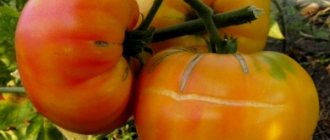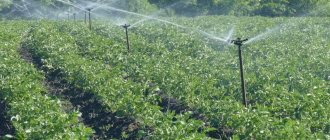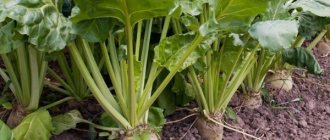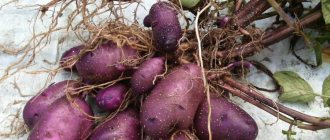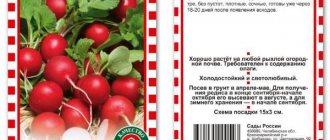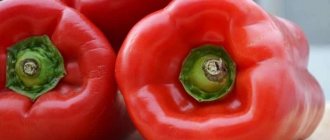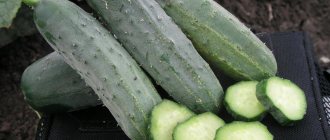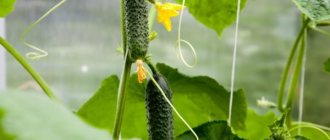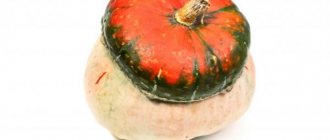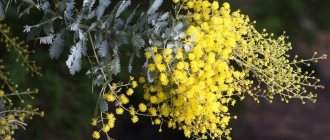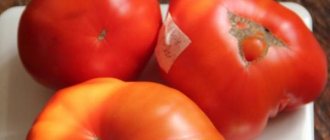Bird cherry is an amazingly beautiful tree, the flowering of which is associated with the perception of spring. However, many gardeners do not plant it on their plots, believing that this plant attracts all kinds of parasites , even promoting their reproduction and distribution throughout the garden. In this article, let's take a closer look at the description and rules for caring for Maak bird cherry.
In fact, everything is quite the opposite; the leaves and inflorescences of the tree secrete a large amount of phytoncides, which are a deadly poison for most harmful microorganisms and small insects, such as ticks, midges or mosquitoes. This is why if you leave a large bouquet of bird cherry in a room, people get a headache.
Also, do not forget about the tasty and healthy berries that this tree produces . You can make jam, compotes from them, use them as a filling for baked goods, or simply eat them, provided that the planted variety is edible.
At the moment, about twenty varieties of this wonderful plant are available to summer residents, both with edible fruits and ornamental ones, including Maak bird cherry.
Briefly about bird cherry "Maaka"
Bird cherry Maak photo
Bird cherry is the common name for about 20 different varieties of this tree. Common bird cherry is quite common and can be found in any city, town or village. One of the most popular types is the Maaka bird cherry variety, often used to decorate streets, parks and private gardens.
Bird cherry or cherry? Maaka in the Khabarovsk garden
Nature has not given us the opportunity to use David's maple, bamboos, eucalyptus and other exotics in our gardens, but the orange exfoliating marsh-colored bark with grooves belonging to the Maak bird cherry takes revenge for everything that we have not received.
From the history
Maak bird cherry is not at all similar to the Siberian bird cherry we are used to. It is named after Richard Karlovich Maak, a Russian naturalist who explored the valleys of the Amur and Ussuri rivers in 1855-1859. It grows in the Russian Far East, as well as in China and Korea.
Amazing bird cherry up to 15-17 m high can be found in the valleys of forest mountain rivers and streams, often near rocky placers and rocks.
You won't pass by. A dense crown, which often takes the shape of an egg, a slender trunk up to 40 cm in diameter, straight yellow shoots, light emerald glossy leaves - everything about it is original. But the most striking thing is the bark: brown-red or golden-brown, sometimes almost bronze, shiny, “shaggy”, flaking across in thin films. “A beauty in rags,” they jokingly say about the Maak bird cherry.
At the end of spring it blooms with small white flowers collected in small clusters. At this time, the incessant hum of bees is in its crowns, and the hives in the nearest apiaries are noticeably heavier with aromatic and tasty honey. This bird cherry is one of the best honey plants in the Far East.
At the end of July, small fruits - drupes - ripen. Black-purple on the outside, with highly colored flesh, they are bitter and inedible for humans. But bears willingly feast on them, which is why the Far Easterners called it “bear bird cherry”. Birds are also partial to bird cherry.
This interesting tree could not have escaped the attention of I.V. Michurina. By crossing the Maak bird cherry with the Ideal cherry and with the steppe cherry, he obtained several hybrids, which he called cerapadus, that is, cherry cherry.
If, in addition to the beauty of the garden in spring and summer, you are concerned about its winter decoration and the pictures that you can observe when everything is covered with snow, you cannot do without Maak’s bird cherry. This is one of the main trees suitable for our climate with memorable bark.
In the garden plot
Maak's bird cherry is very winter-hardy and can withstand temperatures down to -40°C without shelter. Little susceptible to attack by pests.
It has little demands on the quality and fertility of the soil, but grows better on fresh, sufficiently moist medium sandy loam.
Easily tolerates both temporary flooding and drought. Usually, only young plants are watered in the first year after planting; subsequently, they are watered only in very dry summers.
The trees can tolerate heavy shade, but grow best in an open, sunny location. It is recommended to place them along the border of the garden or along the house.
Crown formation comes down to pruning vigorously growing shoots and removing excess growth. Maaka bird cherry tolerates replanting, pruning and asphalt covering well. The best time to plant is April or October. It grows quickly, easily, and is propagated by seeds.
Honey light
Maaka bird cherry was introduced into cultivation in 1870, and now it can often be found in green spaces not only in Far Eastern cities, but also in the European part of the country.
In landscape design, Maak's bird cherry is best in the form of a multi-stemmed tree, when the effect of the bright bark is increased many times over. In the pre-winter and early spring, as well as in the long winter months, Maak's bird cherry simply glows with a soft honey light, reminiscent of the elegant colors of amber.
Maak's bird cherry makes excellent tapeworms. It is also often used in orchards and in corner compositions, where bird cherry acts as a background for everything else.
The veil of creamy flowers in spring goes well with mountain ash, maple and volzhanka of all stripes. But in the fall, the Maak bird cherry does not shine with interesting autumn colors, and besides, the leaves fly off very quickly in order to present to the whole world the main advantage of this tree - its beautiful bark.
In spring and summer, tall herbaceous perennials and grasses can grow near the bird cherry tree. The main thing is that the trunk is as open as possible by winter.
Maak's bird cherry goes well with various tree trees and willows that have colored bark.
Soft wood with a beautiful texture is easy to cut and works well. The beautiful coloring and large size of Maak bird cherry trunks give reason to recommend it as a material for finishing work and for making furniture.
What are cerapaduses?
Cerapadus are hybrids between cherry and Maak bird cherry. Their name consists of the Latin names for cherry (“Cerasus”) and bird cherry (“Padus”). These plants are obtained by pollinating cherry flowers with bird cherry pollen. If, on the contrary, cherry pollen was used to pollinate bird cherry flowers, then the hybrids are called “padocerus.”
In terms of the structure of the tree and inflorescences, cerapadus is a tree with a powerful root system, which in appearance is more reminiscent of bird cherry than cherry, while its fruits themselves are more similar to medium-sized cherries, but collected in a bunch of 3-6 pieces. The taste of these fruits depends quite a lot on the variety; they can be tart almost to the point of inedibility, or quite pleasant, sweet and sour.
From bird cherry, cerapadus inherited high winter hardiness and resistance to many diseases, including coccomycosis.
Cerapadus and Padocerus varieties with good fruit taste are most often classified as ordinary cherry varieties, such as Dolgozhdnaya and Novella (Cerapadus) or Almaz, Firebird, Korona and Oksamit (Padocerus).
Cerapadus varieties VP-1, OVP-2, OVP-3 and Rubin are used as rootstocks for cherries, and VTs-13 and LTs-51 for cherries.
Cerapaduses combine the best qualities of their “parents”.
Specialist comment: Nikolay GLAZ, Candidate of Agricultural Sciences
Vladimir Simagin and Anna Lokteva from Novosibirsk are engaged in bird cherry trees and their selection. It was Simagin who discovered that our Maaka bird cherry is actually not a bird cherry, but a cherry.
This discovery made it possible for breeders to obtain cherry varieties that are resistant to a number of diseases dangerous to cherries; in addition, they have become more winter-hardy. In Bryansk, Maina Kanshina received a number of such varieties. The varieties of Oryol selection also have the “blood” of the Poppy cherry.
In our conditions, no one has studied these plants; in Chelyabinsk, Pitelin and the scientific and production association “Gardens of Russia” are engaged in such work.
I brought a collection of cuttings and grafted them in 2013 on various rootstocks, a positive result of compatibility was obtained only on cherry, which we call steppe, but in fact it is not steppe cherry (I am very familiar with it), but most likely Michurin hybrids of garden cherries , unsuitable for fresh consumption (bitter). But compotes made from this berry are very tasty. Such cherries often freeze slightly, but grow well from the root. This property in places of traditional cherry culture is part of agricultural technology and in nursery farming the method is often used not by grafting, but by propagation by rooting green and lignified cuttings. For our conditions, own root material will also be preferable; it can be obtained by dividing the bush and by layering and root shoots.
In the Far East, Vera Tsarenko is engaged in cherry breeding - Vladivostok, VIR station. She has the entire collection of Far Eastern cherries, we have 6 types. Sakhalin and Kamchatka types of cherries are very decorative; their stalks are long, like domestic cherries, only the fruits are small and bitter. The spread of these species is hampered by low winter hardiness, although several trees grow in the garden of the DalNIISKH (on Krasnodarskaya Street).
Maak cherry is winter-hardy, used in landscaping, the fruits are inedible, but white-breasted bears love them. Before leaving for the winter, they seriously break off their crowns, putting entire nests of broken branches in the forks of skeletal branches. Hunters suggest that bears even gain fat on the Maak cherry tree, since they feed on it for a long time, the excrement consists of only cherry seeds, and the fatness of the animal is maximum at this time.
Our gardeners are most familiar with the felt cherry, but lately there has been no good planting material; many seedlings on the market are passed off as varietal material, which has greatly spoiled the reputation of the “local” felt cherry.
Modern Tsarenko varieties are very large-fruited and worthy. These are Alice, Tsarevna, Okeanskaya and a number of others. The wonderful large-fruited variety G. Kazmina Leto has not lost its importance. The old Domanka variety is highly valued by gardeners, but planting material of these varieties should only be purchased from reliable producers; many “nursery growers” seriously believe that reseeding produces quite valuable planting material, which is fundamentally wrong.
History of variety development
Maaka is the surname of the famous Russian geographer and traveler R.K. Maaka, who was the first to describe a previously unseen species of bird cherry during his travels along the Amur and Ussuri in the mid-nineteenth century. In honor of him, they gave the name to a new species of bird cherry. However, the first mention of the Maaka variety in scientific works dates back to 1957.
Austrian biologist F.I. Ruprecht wrote about the new bird cherry variety "Maaka" for the local botanical community, as the Maaka bird cherry (padus maackii), whose homeland is located in the regions of Manchuria. Maaka also grew in the regions of the Far East, being less common in Korea. The discovered variety turned out to be very interesting representatives of its species and interested many breeders. Maak bird cherry is crossed with cherry to improve the properties of these Rosaceae. I.V. Michurin managed to develop the best selection specimens, which were simply named cherry bird.
Diseases and pests
Any bird cherry, including the Maak variety, is resistant to various pests. But this does not mean that the tree cannot get sick at all.
The most common ailments affecting this plant are fungal diseases. The fungus affects :
- fruit;
- branches and leaves;
- bark and trunk.
Fruit diseases
Drupes (the popular name for bird cherry berries of this variety) suffer from deformation , the so-called “pockets”. The fungus infects the fruit, resulting in the growth of the ovary, that is, the fleshy part, and almost no development of the seed.
Infected drupes take on the appearance of brown, large, swollen formations with empty cavities inside - pockets. The development of infection leads to loss of yield and disruption of the decorative attractiveness of the tree.
In order to protect yourself from this fungus , you need to destroy the damaged fruits and treat the tree itself with products containing copper. It will also be necessary to treat the damaged plant in the spring, before the buds open.
Diseases of leaves and branches
Leaf rust
This disease develops mainly in forests and parks, but can also visit gardens. The fungus that causes this nuisance lives in spruce cones . From where it migrates to the leaves and branches of bird cherry.
Rust on Maak bird cherry leaves
In June, brown or purple spots form on the foliage, the same formations on the branches. By the end of summer, the tree completely loses its aesthetic appeal.
To combat this disease, bird cherry is sprayed with vitriol , the source of the fungus is found - spruce - and all the cones on it are destroyed.
Clusterosporioses, or spotting
Hole spot
Hole spotting of Maak bird cherry
is expressed in the fact that in June or in the first half of July the leaves are covered with brownish-brown spots with a bright crimson border . As the disease progresses, these spots fall out, and the tree gives the impression of being eaten away by insects.
Brown spot
Towards the end of summer, brown round through spots with a yellow pad on the top form . This yellowish formation is sporulation of the fungus. When the disease is highly developed, the entire leaf is covered.
Orange spot
Orange spotting on the leaves of Maaka bird cherry
In mid-summer, orange angular spots appear on the leaves, up to 10 mm in diameter . Flat, brightly colored. As the fungus develops, they can merge, occupying a significant area of the leaf. This disease is often found in Siberia and the Far East.
Bird cherry Maak: description
The Maaka bird cherry, whose height ranges from seventeen to twenty meters, is found in its natural habitat. Artificially grown trees are much smaller in height, about ten to thirteen meters. In both cases, the diameter of the trunk at its thickest point is about thirty centimeters. The Maaka bird cherry has a very long lifespan.
The bark of the Maak bird cherry has an unusual color. It resembles bronze or gilding, with a warm brick tone. The bark is very thin and peels off like a film during the period of wilting. Maaki castings are oval, pointed at the end, with jagged edges, about ten centimeters long and five to seven centimeters wide.
Bird cherry Maaka begins to bloom in the last month of spring. At this time you can see a large influx of bees, especially near Maaki. And it’s not surprising, because the pollen of this type of bird cherry is especially attractive to insects, which is why it is considered the best honey plant of its kind. Therefore, many summer residents and gardeners, in addition to the opportunity to observe the beautiful flowering of Maaki, take advantage of the love of bees for this plant and build apiaries next to its thickets.
By July, bird cherry bears fruit, not only in the form of fragrant honey, but also in the form of dark blue berries. For humans, they are unlikely to become a favorite delicacy due to the bitter filling, but small birds, forest rodents and even bears will willingly eat everything that the Maaki harvest produces.
It is thanks to the birds that bird cherry can be admired not only in the eastern regions, but also in the climate zone of the middle zone. Migratory birds bring seeds with them, and due to the unpretentious nature of the plant, it also grows in other climatic conditions.
Common diseases
All types of bird cherry are resistant to all kinds of pests. However, this is not a guarantee that the tree will not get sick. The most common diseases that affect bird cherry are fungal diseases. They can affect all parts of the plant: fruits, leaves, branches and even the bark of the trunk.
Fruit diseases
Diseases of berries can manifest themselves in the form of various changes in their shape. The ovary pulp affected by the fungus begins to grow, while the seed practically does not grow. After such a disease, the berries (the so-called drupes) become large and swollen, acquiring a brown tint. Inside them there are voids called pockets. Such infections reduce productivity and disrupt the aesthetic appearance of the tree.
To avoid infection, it is necessary to get rid of infected fruits and treat the tree with special substances that contain copper. This treatment should also be carried out in the spring, before the buds begin to open.
Diseases of leaves and branches
Despite the fact that Maaka is resistant to many negative environmental factors, it is still susceptible to some diseases. Among them, the most common are:
- Leaf rust. Most often, this disease affects park and forest trees, but garden trees are not immune from it. A type of harmful fungus that can cause a similar disease lives in the cones of spruce trees. From there it easily migrates straight to twigs and leaves. As a rule, at the beginning of summer, brownish and purple spots appear on the leaves and branches. This leads to the fact that the tree loses its decorative properties. Control methods: treating bird cherry with vitriol, detecting infected spruce and removing cones from it.
- Spotting or clasterosporiosis. This disease is divided into different types, including hole spot, brown spot, and orange and purple spot. Let's take a closer look at the first type, or perforated spotting. It is characterized by the fact that in the first half of summer the leaves become covered with brown spots with a crimson edging. Over time, these spots fall out, and it looks as if the leaves have been eaten by insects.
Maak bird cherry has many advantages that are unique to this type of tree. Having once decided to plant this wonderful tree on his plot, the gardener will not regret his choice, and the bird cherry will delight him with its flowering and fruiting for many years.
Bird cherry "Maaka": characteristics
The Maaka bird cherry tree has the following set of characteristics:
- propagated by seeds and/or cuttings,
- has resistance to drought and frost,
- not afraid of temperature changes and flooding, great for growing in any region,
- not demanding on the soil, grows in any soil,
- grows equally well in shady places and in well-lit areas,
- high growth rate,
- no special care is required, the plant can independently resist most diseases and harmful insects
Features of the species
Bird cherry type Maak has the following relevant features:
- cold and drought tolerance;
- not picky about the soil (the plant can exist in any soil. An excellent option is moist soil);
- tolerates prolonged downpours calmly. Excess moisture does not affect the growth of the plant in any way;
- the tree can grow in the shade as well as in a sunny place;
- requires little care;
- has a high growth rate.
Drought tolerance, cold resistance
The highest cold resistance is a property of the Maak-type bird cherry species, which made it the main object of interest for breeders. The plant serenely experiences a drop in ambient temperature to -45 C.
Bird cherry also tolerates drought. Only young plants require abundant watering in the first year after planting. Mature trees are watered only during the hot summer seasons.
Plant yield
Bird cherry berries ripen in mid-summer. They are large, with bones. About 50 berries appear on one cluster, and the yield itself of the presented species is not high.
The berries are impenetrable, somewhat dry, and have an unpleasant bitter taste, but are not poisonous. The fruits are collected at the end of summer or at the beginning of autumn, separated from branches and foliage, and dried on the street or in dryers or ovens.
Fruit use area
Bird cherry berries of the Maak type, due to their bitter taste, are not suitable for use as food in fresh form. The main method of use is associated with pharmaceutical qualities: the berries, due to the high content of beneficial tannins, have an anti-inflammatory effect.
Dried berries of this type, bird cherry, are often prescribed as an additional treatment for digestive disorders.
The dried fruits are also ground and added during the baking process. The shelf life of such fruits is up to 3 years.
Resistance to diseases and parasites
All types of bird cherry show stable resistance to various diseases and most parasites. Leaves and flowers release special phytoncides into the environment, which are poisonous to many insects and microbes.
When cultivating Maak-type bird cherry, it is worth paying attention to methods of prevention: pruning the crown, removing dry shoots, systematically inspecting the plant and its closest neighbors.
Pros and cons of the type
This type of plant is quite in demand among gardeners as a way of landscaping public gardens, parks, and personal plots.
Pros of the plant:
- the plant is unpretentious to the ground in the place of growth;
- does not require regular care and frequent watering;
- has a repellent effect on some types of insects;
- thanks to the highest lifting speed and lush crown, it is successfully used for creating garden compositions;
- It tolerates direct sunlight and shade easily.
But bird cherry, like Maak, has its own disadvantages:
- the tree needs free space and a sufficient amount of light, so the space between plants should be at least 5 m, and in a shady area even more is required;
- the fruits have a bitter taste and are not suitable for food;
- prolonged exposure to bird cherry flowers causes headaches;
- During the flowering stage, the plant attracts a large number of bees or wasps.
The indicated defects do not deter gardeners who decide to decorate their personal plot with this tree.
Is Maaka bird cherry edible or not?
Many people wonder: is it possible to eat maak bird cherry? Although Maaki berries are not tasty, they are still consumed in dried form. Due to the high content of tannins, bird cherry fruits are good for intestinal disorders and improve immunity. The fruits also fight inflammatory symptoms and have a strengthening effect on the body. The shelf life of dried berries under proper storage conditions (in a dry place) reaches three years. Grated fruits are well suited for baking, as an additional seasoning or decoration.
Botanical description
Apricot
In nature, Maaka bird cherry grows in the Far East, China and Korea. Found on river banks, clearings, roadsides and parks.
Maaka bird cherry blossoms in late spring
Tree 4–10 m high, trunk diameter 40 cm. Shoots are erect, leaves are arranged alternately. The bark is bronze or brown, the shoots are light yellow. The bark peels off from the trunk in the form of a thin film.
The leaves are oval-shaped with a pointed end and serrated edges. Small inflorescences are collected in brushes. The flowers are white, with five petals, 1 cm in diameter.
Bird cherry is a honey plant and attracts insects during flowering. During late frosts, the flowers fall off. Leaves and flowers secrete phytoncides that repel blood-sucking insects.
Bird cherry bears fruit in July. When ripe, the berries change color from red to dark purple. The fruits are inedible due to their bitter taste. After consumption, they have an astringent effect for intestinal disorders. In the forest, birds, squirrels, hedgehogs, and bears feed on the fruits.
Dangerous pests and tree diseases
In addition to the resistance of Maak bird cherry to drought and frost, this variety demonstrates amazing resistance to most harmful insects and common tree diseases. Bird cherry leaves emit a special chemical ester that poisons insects. But this property does not guarantee complete safety from pests.
To prevent pests from appearing on trees, regular preventative procedures should be carried out. Inspecting the bird cherry tree and nearby growing trees for infection with any disease or the appearance of pests will contribute to the timely prevention of damage to the trees. It is also necessary to cut off dead branches, trim and thin out the crown.
Interesting facts about bird cherry
Pawpaw planting and care, growing in soil
When it comes to parasites, the opposite is actually true. Bird cherry flowers and leaves emit a huge amount of phytoncides, which are deadly for many pests and insects: ticks, mosquitoes, midges, etc. Consequently, if you put a large bouquet of bird cherry in the house, it can cause a headache.
Bird cherry berries are very tasty and healthy. They are used to make compotes and jam, and are used as a filling in baked goods (only edible varieties, of course).
Today, about 20 varieties of bird cherry have become widespread, which have both edible and decorative fruits. Among them, Maak's bird cherry is very popular.
Bird cherry "Maaka": pros and cons
Among the advantages of this type of bird cherry:
- unpretentious to the soil,
- does not require regular watering,
- easy tree care, does not require special fertilizers,
- Thanks to the chemical composition of the elements secreted by the leaves, it effectively repels ticks, lumps, and a number of other unpleasant insects.
A beautiful plant, a favorite of landscape designers, ideal for garden decoration, city streets and grows well in shaded and densely lit places
There are also a number of disadvantages: trees, due to their lushness, require enough free space, so gaps between trees need to be left about five to six meters. Bird cherry fruits, although edible, have many useful qualities; they are eaten only in processed form.
The smell of bird cherry is intoxicating in the truest sense of the word. Inhaling the scent of bird cherry blossoms for a long time causes severe headaches. In the spring, when the bird cherry blossoms, many wasps, bees and bumblebees gather around the trees.
Planting and care
Maak's bird cherry demonstrates good survival rate, so the planting location is not particularly important for it. However, the crop demonstrates the best growth on loam with close groundwater.
Landing dates
The most suitable time to plant a tree is the first ten days of March or the end of autumn. When selecting Maak bird cherry seedlings, you need to pay attention to the size of the planting material. The height of the plants should not exceed 75 cm. If the seedling is higher than this mark, it is advisable to prune it.
Growing conditions
As for growing conditions, there are no strict requirements for them. Maak bird cherry can grow in the shade, but in the sun it will be brighter, more luxuriant and more decorative. It also responds well to fertilizers applied during planting.
Watering depends on weather conditions. The same can be said about the need for shelter. However, since the variety demonstrates good frost resistance and can grow even in Siberia and the Far East, as a rule, measures to protect the tree for the winter are not carried out.
How to plant correctly
Preparation of planting material includes soaking seedlings in an aqueous solution of a growth stimulator for 10 hours (with an open root system) and for 30 minutes (with a closed root system).
Do not forget about the preliminary inspection of the material and the removal of all dry and damaged branches (if any). The last stage is to carefully trim the roots by 1-1.5 cm.
The second stage is preparing the planting hole. It begins to form two to three weeks before planting. The depth and diameter are approximately 45-50 cm. The excavated soil is carefully mixed with peat, humus, river sand and mineral fertilizers. Then the soil is poured back into the hole and left until planting.
Plant Maaka bird cherry at a distance of 2-3 m from each other
The algorithm for planting a plant is very simple:
- The “real” soil is removed from the hole.
- A seedling with a well-straightened, trimmed root system is placed in a hole.
- Then the soil is filled in, periodically shaking the young tree to avoid the formation of air pockets.
- The soil is lightly compacted in the tree trunk area, watered and, if necessary, mulched.
Peat or sawdust is used as mulch.
Aftercare
Caring for this variety is not at all difficult. Maak bird cherry blossoms begin in May. Until this point, it is watered moderately and pruned.
The formation of the crown begins from the moment the first shoots appear. To give the correct shape, only a few side branches directed to the sides are left. The top is carefully trimmed with garden shears or pruning shears. This procedure is repeated for the first few years.
Comment! All pruning work is carried out only with disinfected tools, and the cut areas are covered with garden pitch.
It is not necessary to fertilize the Maak bird cherry in the future. However, if you wish, you can apply mineral fertilizers in small quantities every few years.
Bird cherry "Maaka": planting
The plant is absolutely undemanding to the land on which it will grow. Choosing a landing site is very simple. Bird cherry is not capricious, takes root well in places with average lighting, and easily tolerates transplants. Bird cherry trees feel equally good in a densely planted garden, alone, and next to residential buildings. It is best to plant bird cherry in early spring or autumn. The most important thing is not to plant sprouts in frozen soil. Regarding growth, it is optimal to choose seedlings seventy to seventy-five centimeters in height.
Basic landing rules
Fortunately, choosing a suitable location for this tree is not at all difficult. Thanks to its natural endurance and excellent decorative qualities, it will look great on any site.
If, for example, there are places in the garden that are too wet due to the proximity of groundwater to the surface of the earth, then the tree will help eliminate this deficiency.
From an aesthetic point of view, Maaka fits perfectly with almost all types of green spaces: it looks great both in combination with trees and shrubs, and on its own. Since the tree is good at replanting and is characterized by rapid adaptation to the new environment, no special conditions are required during this procedure. It is enough just to follow general rules, such as:
- Dig a hole for planting in advance. It shouldn't be too deep. The use of large amounts of fertilizers, in particular organic ones, is not recommended. This can only harm the young tree.
- The most suitable height for a seedling is 70−75 cm. If it is longer, it should be shortened.
- If two or more plants are planted (for example, for cross-pollination), then it is necessary to maintain a distance of 5-6 meters between them.
- The roots must be distributed in the hole, then covered with soil and watered well.
- The soil around the planting should be lightly mulched.
It is best to plant Maak Bird Cherry in early spring or late autumn. When planting in spring, the ground should be thawed.
Bird cherry "Maaka": replanting and planting instructions
- the hole under the tree should not be dug too deep,
- excessive fertilization of the soil for seedlings has a detrimental effect on the well-being of the plant,
- it is necessary to maintain a minimum distance between seedlings of five meters,
- The tree must be planted very carefully, without damaging the roots.
The roots should be slightly straightened inside the hole and covered with earth after the seedling is planted and covered with earth; it is better to mulch the top with peat or sawdust. Next, the tree needs to be watered.
Advantages and disadvantages
Among the indisputable advantages of planting bird cherry on your own summer cottage are the following:
- unpretentious
to soil composition; - does not require careful care;
- repels midges
, mosquitoes and ticks; - does not need watering
, except for the first year of life; - has unlimited potential when creating landscape compositions;
- fast growth;
- Grows in both bright sun and shade.
The fallen foliage of this tree is rich in nitrogen, lime and potassium. This allows fox grass to be used to obtain good humus and helps improve bedding.
The disadvantages of planting this tree in the garden include such points as
:
- light-loving tree
, the minimum distance between seedlings should be 5 meters, and if the bird cherry is determined to live in the shade, then more; - abundant basal shoots
; - the inedibility of the drupes
that the Maaka variety bears fruit from; - the possibility of getting headaches
when staying near a flowering tree for a long time; - attracting bees
, bumblebees and wasps during the flowering period, which is extremely dangerous for allergy sufferers.
Bird cherry Maak: reproduction and care
Since bird cherry is very undemanding, young trees should be watered occasionally and not overdo it with fertilizers. During particularly dry periods, you just need to make sure that the plant has enough water, watering it as needed. The only thing you need to keep an eye on is the sprouts from the crown. The top will have to be trimmed periodically so that the side branches feel free and can grow. Once the tree has grown enough, it will only be necessary to thin out the crown occasionally. Fertilizers are almost not required; you need to feed the soil of trees with them no more than once every two years. Young bird cherry sprouts need to be processed.
Reproduction methods
As a rule, two main methods are used to propagate Maak bird cherry: cuttings and seedlings.
Seeds are planted in late August - early September. Often, seedlings grow as a result of self-seeding, when the fruits fall to the ground and then, under favorable conditions, sprout. Young shoots can be transferred to a permanent place in the spring.
Due to the unpretentiousness of the variety, there is no need to pay much attention to bird cherry. The main thing is to ensure that the soil around the seedling is always moist for the first 15-20 days.
Comment! You can increase the quality of pollination of the Maaka variety by planting red bird cherry next to the tree.
However, the most common method for propagating this species is cuttings. Shoots up to 15 cm long are cut into cuttings. In this case, only a couple of leaves are left on them at the very top, after which they are placed in water with a growth stimulant diluted in it.
A day later, the bird cherry cuttings are transplanted under the film. The soil used for replanting should consist of horizontal layers of humus soil and river sand. The cuttings are buried a couple of centimeters and germinated, watering four to nine times, depending on weather conditions (the hotter, the more often).
As soon as the bird cherry cuttings develop a root system, around the last ten days of September they can be “relocated” to open ground. To do this, the seedlings need to be fed with nitrogen-containing fertilizers, watered regularly and do not forget about loosening and weeding. The strengthened seedlings are transplanted to a permanent place.
Cuttings are cut only in the first half in cloudy weather
Bird cherry "Maaka": diseases
Although many diseases are not harmful to bird cherry, various types of tree fungus pose a serious danger to Maak bird cherry. Here are a number of diseases from which it is not protected: Leaf rust is a type of fungus that affects the leaves of a tree. Dark spots of a bluish or brown tint appear on them. Treatment is copper sulfate.
Rubella is another type of fungus. The symptoms are similar to leaf rust, only the spots on the leaves have a red tint, hence the name of the disease. To treat rubella, you need to treat the tree with copper sulfate.
Rot is a disease caused by the tinder fungus. Because of it, the entire root system of the tree rots. With progressive rot, it is not possible to save the plant. The only way out is to uproot the tree.
Cytosporosis is a very common type of fungus. To prevent it, trees are treated with lime at the base. The disease affects the entire tree and manifests itself in the form of light tubercles on the bark. If these are detected, you need to chop off the infected areas or cut off the bark, then treat them with copper sulfate.
The chemical secretions of bird cherry save it from most insects. But bedbugs, bark beetles, and weevils are immune to them. To remove the listed pests, it is enough to treat the tree with karbofos. Dosage – sixty-five grams per ten liters of water.
Tree care
It is easy to care for bird cherry - in the first year or two of its life on the site, the tree needs to be watered periodically, and in the first years of the plant’s growth it is important to pay attention to the formation of the future crown.
When the first side shoots appear, it is advisable to leave 4-5 of them that are most developed and looking in different directions . The same will have to be done with the branches growing on them. The top shoot must be pruned in order for the lateral shoots to develop as much as possible. It is better to treat the cuts with garden varnish.
An adult plant needs periodic thinning of the crown
This will have to be done for several years. If you wish, you can thin out the crown of an already mature tree.
As for all kinds of fertilizing, it makes no sense to apply them more often than once every couple of years. If you wish, you can add a little mineral fertilizer before the bird cherry blossoms in order to extend its duration and make it more abundant.
Virginia bird cherry (Padus virginiana)
Native to the eastern regions of North America, it prefers to grow along rivers. This species is very similar to the common bird cherry, but differs in small buds located away from the shoots. At the same time, the bird cherry racemose buds are pressed to the stems, and their length is 1.3 cm. This species is represented by a tree, the height of which can reach 15 meters, the crown is spreading. The finely cracked bark has a dark color. The dense glossy leaf plates are oblong-ovoid in shape, sharp-serrated along the edge, and reach 12 centimeters in length. During opening, the leaf blades are green-brown, in the summer months they are dark green, and in the fall the color changes to rich red-yellow. Multi-flowered racemose inflorescences reach 15 centimeters in length and consist of white flowers, reaching about 1.3 cm in diameter. The spherical fruits have juicy pulp. They are red at first, but become dark red when ripe. Of great interest is the form of this species, called Schubert: at 15 years old, this tree has a height of 300 to 400 cm, young shiny leaves are painted green, which over time gives way to purple-red, hanging racemose inflorescences consist of white flowers, reaching 10 mm. Cultivated since 1950. This species also has other interesting forms:
- Atropurpurea. It is represented by a large shrub or tree, characterized by rapid growth and reaching a height of 15 meters. The color of the bark is black, the foliage is purple. The edible dark red fruits have a tart taste.
- Dawn. A low-growing, partially self-fertile tree, the height of which does not exceed 300 centimeters. The inflorescences are relatively large. The taste of the fruit is tart, sweet and sour, and the color is dark red.
- Narym and Taiga. The height of such self-sterile trees is from 350 to 400 cm. The crown is spectacular, the inflorescences are relatively large. The color of the fruit is red, and the sweet-sour tart pulp is yellow.
Gardeners cultivate a large number of varieties of bird cherry, for example:
- Sakhalin black. The height of such a self-sterile tree is from 6 to 7 meters. The lush crown has a pyramidal shape. The leaf blades are large, the inflorescences are multi-flowered. The fruits ripen early and have sweet, slightly tart green flesh.
- Tenderness. The height of the tree is from 350 to 400 cm. Long racemose inflorescences consist of small fragrant flowers. Their color at the very beginning of flowering is dark red, and then it gives way to white.
- Captivity. Double flowers are highly decorative.
- Gull. The height of the tree is from 4 to 4.5 meters. Large racemose inflorescences consist of large white flowers.
- Meteo. The flowers are white, the racemes are very long (about 20 centimeters).
There are a large number of hybrid varieties that were born through crossing different species:
- Purple candle. The tree has a lush narrow pyramidal crown and reaches a height of about 5 meters. The green color of the leaf blades changes to dark purple by mid-summer. The length of the semi-dropping racemose inflorescences is from 10 to 14 centimeters, they consist of white flowers.
- Late joy. The hybrid was created by crossing bird cherry and virgin bird cherry. The height of the tree is about 8 meters, the shape of the crown is narrow pyramidal. The rough bark is light gray in color, the leaf blades are elliptical in shape. Dense racemose inflorescences have a length of 14 to 15 centimeters, which consist of 35–40 white flowers, reaching 1.5 cm in diameter. The rounded fruits have a dark brown, almost black color, the taste of the juicy yellow-green pulp is sweet and sour, tart.
- Mavra. The shape of the crown is wide-pyramidal, the branches droop at the ends. The inflorescences, flowers and foliage are similar to Late Joy, but the fruit color is darker.
- Black glitter. Mid-early hybrid. The height of such a self-sterile tree is from 5 to 6 meters. The medium-sized leaf blades are dark green in color. Multi-flowered cylindrical inflorescences consist of large flowers. The fruits are black, the flesh is green-yellow and has a pleasant taste.
Types and varieties of bird cherry
4 out of 20 species grow in the wild nature of Russia. The plant's hardiness, ease of care, and ability to easily reproduce and take root stimulate the breeding of new hybrids.
Bird cherry (Prunus padus)
A ubiquitous species of mixed forests in Russia. Common bird cherry is also called raceme or bird cherry. It grows in open places with nutritious soil, close groundwater, along the banks of rivers and lakes in the form of a powerful spreading tree, in unfavorable conditions in the form of a decaying bush. Flowering is always abundant, but it does not bear fruit every year because it is damaged by recurring frosts or pests.
It is with this species that the folk saying “When the bird cherry blossoms blooms, then the cold lives” is associated. The time for “wedding attire” occurs at the end of spring. After steady warmth sets in, it’s time to plant the seedlings in open ground.
Cultivars:
- Prunus padus Russian dressing (Russian terry). Similar to the Plena variety, which has been known to Europeans since 1892: a tall tree up to 10 m with an openwork crown, large long clusters up to 20 cm, containing 40-46 double fragrant flowers. Unlike Plena, it bears fruit. The most winter-hardy hybrid.
- Prunus padus Colorata (Colorata): With pink drooping inflorescences and young green leaves, the leaf veins turn purple from mid-July. By autumn, the leaves acquire a golden-brown hue; aronia variety, winter-hardy, not picky about soil, drought-resistant.
- Prunus padus Albertii (Albert II): obtained by Albert Regel (director of the St. Petersburg Botanical Garden), distributed in 1902 from the Vilmorin nursery (France). It is distinguished by erect large clusters 12-15 cm long, abundant flowering, and a strong aroma.
- Prunus padus Watereri: a small tree with erect branches and a vertical crown. Large drooping fragrant inflorescences up to 20 cm long, containing over 50 flowers. Long flowering variety. Loves the sun, almost does not bloom in the shade.
The Summer Glow (Wendell) variety is distinguished by the changing color of its leaf blades: blooming green, wine-red in summer, leaves turning purple in autumn, and by the beginning of leaf fall the bird cherry tree becomes almost black. Other red leaf varieties: Purple Queen, Berg Redleaf.
Fruit hybrids with large berries up to 1-1.2 g and high yield have been bred:
- Rassvet is a black-fruited, winter-hardy, early-ripening variety.
- Late joy - berries 8 mm, without astringent taste, juicy, aromatic.
Among the decorative forms of bird cherry there are trees with a pyramidal (Siberian Beauty), oval (Red Tent) and narrow pyramidal (Purple Candle) crown. All plants are resistant to urban gas pollution. Prefer rich, moist soils.
Asian bird cherry (Padus asiatica)
A native of Eastern Siberia and the Far East. The species is similar in parameters to the common bird cherry. A distinctive feature is that young shoots are pubescent. Tree 8-15 m tall with a spreading dense crown. Several trunks sometimes grow from one root.
Asian bird cherry blooms in May for about 11 days. The berries are black, edible, and ripen in late July or early August. Resistance to dust and gas is low. Recommended for landscaping parks, squares and gardens.
Bird cherry (Padus maackii)
A species adjacent in nature to the Asian one. People call it bear berry. The taste of the berries of this type of bird cherry is very bitter. They are inedible for humans, but bears, squirrels, and birds easily tolerate them.
Externally, Maaka is distinguished by its bright light brown bark with a golden tint. It is smooth, strewn with large lentils. With age, it does not crack, but flakes off in thin transverse plates. Grows as a tall, straight tree with one or several trunks.
A special feature is the abundant glands located on the reverse side of the leaf, which impart stickiness to the leaf blades when blooming. Flowering begins in May. The inflorescences of the Maak bird cherry are relatively small, 5-7 cm, and the smell is barely perceptible.
The appearance is decorative with a wide pyramidal crown, bright yellow autumn foliage, and colorful bark. Bird cherry is resistant to the vagaries of nature and is unpretentious in care. Used in creating alleys, as a tapeworm. Among the cultivated forms, the variety Prunus maackii Amber Beauty stands out with its decorative copper bark, lush green leaves, and lush snow-white flowering.
Virginia bird cherry (Padus virginiana)
A tree from North America grows up to 15 m. It blooms in large clusters up to 15 cm long, later than others, so the yield of fruit crops is high.
It is distinguished by odorless flowering and ripening of fruits: initially green, then reddening, in cultivated species - purple-black. The pulp is juicy with sourness, not astringent. Less frequently affected by pests than other species. It is not pollinated by our bird cherry trees, so several trees of this species are required for fruiting.
Decorative varieties:
- Schubert: a tree 5-6 m tall with a pyramidal voluminous crown. The leaves bloom green, becoming glossy purple by mid-summer. White flower brushes. The berries are reddish-brown.
- Canada Red: Green leaves in early June turn purplish-purple by mid-summer, blooms in small, odorless white clusters.
- Shpeta: large drooping yellow inflorescences.
Bird cherry (Padus serrulate)
Natural habitat - Korea, China, Far East. The plant of extraordinary beauty grows more than 20 m with an ovoid crown. Noteworthy are the corymbose inflorescences of 1-2 white or pinkish flowers with a diameter of 30 mm. The flowers bloom at the same time as the purple foliage. As the leaves grow, they turn green or yellow, and by autumn they turn purplish-violet and brown.
There are crops with double white, white-pink flowers and various crown shapes: conical, pyramidal, weeping. The finely serrated beauty, like other types of bird cherry, is planted in group plantings, single plantings as a bright accent, living walls, near water.
Bird cherry (Padus mahaleb)
The species is suitable for cultivation in Russia because it comes from Europe. Distributed in the southern regions under the name magalebka or antipka. The English call cherry Saint Lucy. It grows as a tall tree, often with many trunks. It blooms with fragrant flowers collected in corymbose inflorescences. The berries are bitter. Feature – does not produce root shoots. Withstands frosts down to -27 °C. Tolerates pruning well.
